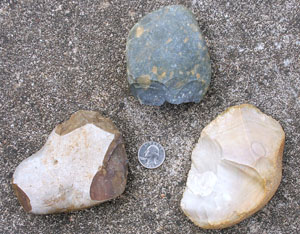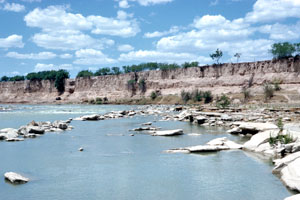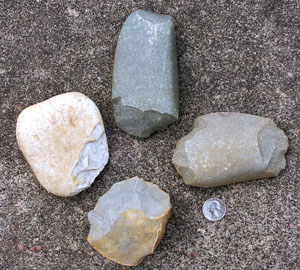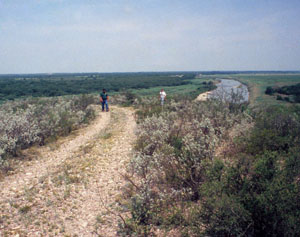Rio Grande Gravels
The gravel beds along the Rio Grande have particularly diverse materials, because this river has its headwaters far to the northwest in the western Rocky Mountains. Most of the gravels found along the river in south Texas probably don't come from quite that far away. A more likely source area for some of it is the Big Bend area west of the Pecos. And other materials were picked up downstream, including reworked Uvalde gravels, and well as sandstone and other rocks found in bedrock outcrops breached by the Rio Grande. Among the rock types found in the South Texas Plains stretch of the Rio Grande are chert, chalcedony, sandstone, limestone, as well as various metamorphic rocks, such as quartzite, and volcanic rocks, such as rhyolite.
While the materials making up Rio Grande gravels may be particularly diverse, most of the cobbles are relatively small and made out of tough materials that survived long journeys. Large pieces of fine-grained material are rare. It is probably no coincidence that the predominance of the Unstemmed Point Tradition of the South Texas Plains is more or less centered on the Rio Grande, where rocks suitable for making large stemmed dart points are hard to come by.
Rio Grande gravels, some ancient and some more recent, can also be found in the terraces above the river and on the uplands miles away. The upland gravel deposits in the Rio Grande valley are sometimes called "Uvalde gravels" and there is probably little meaningful distinction.



